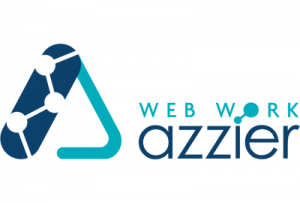A wise man once said, “A penny saved is a penny earned.” However, in the case of maintaining large capital assets, such as facilities, plant equipment or mobile assets, spending money on maintenance automation specifically can result in significant savings, over time.
Consider these points:
- The cost of repairing equipment damage or failure due to deferred maintenance has become an important line item in many companies’ financial statements.
- Lack of planned preventive maintenance on aging assets encourages reactive maintenance practices that can negatively impact budgets and bottom lines.

Poorly run or inadequate maintenance programs are proven to cause costly downtime. A study by Kimberlite, a market research and analytics firm serving the oil and gas industry, found that offshore oil and gas operators average $49 million annually in financial impacts due to unplanned downtime.
Automation with Computerized Maintenance Management Software (CMMS)
These financial drains can be minimized, if not completely avoided, with a complete preventive maintenance program in which maintenance tasks and activities are managed and monitored with a Computerized Maintenance Management Software (CMMS). In addition to minimizing downtime, CMMS has been proven to provide the following bottom-line boosts:
- Centralized Reporting – You can’t measure what you can’t see, and a centralized system means you can capture and report on data with reduced manpower and paper flow.
- Extended Equipment life – Getting longer life from all assets means greater shareholder value and increased cash flow.
- Increased Productivity – Streamlined business practices and shared knowledge means greater productivity across all levels of the enterprise.
- Reduced Downtime – Recurring equipment downtime can be tracked and planned for accordingly.
- Reduced Inventory Costs – Maintenance teams will know what parts are available and when to reorder them.
- Gain Proactive Safety – Work orders can include safety tasks for better compliance.
- Increase Warranty Awareness – Decision makers will know whether or not equipment is under warranty and avoid paying for unnecessary repairs.
- Meet Regulatory Requirements – Capture regulatory information within the CMMS for reporting to government and regulatory bodies.
- Improve Workflow – Automated data transfer between other software packages such as accounting, fuel card systems, HVAC monitoring, etc. streamlines workflow.
- Shared Knowledge Base – Once a centralized system is integrated with accounting, purchasing and other legacy systems, real-time information sharing can occur throughout the enterprise.
- Mobile Device Integration with the CMMS — Maintenance is expedited and repair times are reduced with the help of mobile apps that can track and deliver work orders and perform other support tasks.
A Real World Example
As an example, let’s consider savings on labor costs.
Labor costs are the highest expense for most maintenance shops. Examples of how time can be saved include eliminating double entry, smoothing the flow of inventory, and reducing the time spent wasted waiting for or sourcing parts.
A simple case would be a company with large, geographically dispersed facilities where maintenance people spend a great deal of time driving between locations. For our example, we will consider a shop of 10 maintenance staff with an average pay rate of $30.00 per hour. If the organization can increase the actual productive time spent doing physical maintenance by 15%, it will gain an additional nine minutes per hour of productivity. The savings would be calculated as follows:
Step 1. – 9 min/hr X 7.5 hr/day ÷ 60 min/hr = 1.125 hours per day additional productivity
Step 2. – 1.125 hr/day X 220 working days/year = 247.5 hours per year additional productivity
Step 3. – 247.5 hr/yr X $30.00/hr/staff X 10 staff = $74,250.00 total labor savings
This example provides hard evidence for the many tangible benefits in adopting a comprehensive maintenance program powered by automation. The cost savings alone can far outweigh the initial implementation and maintenance software costs.
The reason most people delay such a project is fear of costing their company money. In reality, maintenance professionals should be focus on the cost savings. A comprehensive maintenance program, automated via a CMMS, can shave expenses in many areas, turning cost centers into bottom-line benefits. That’s something that makes everyone happy, from the C-suite to the plant floor. For more information, including details on what a centralized CMMS package could do for your firm, please visit Fast ROI and Hard Savings – Web Work Azzier.

Share This:




 CDN NEWS |
CDN NEWS |  US NEWS
US NEWS 


























COMMENTARY: Where the Fight Against Energy Subsidies Stands – Alex Epstein